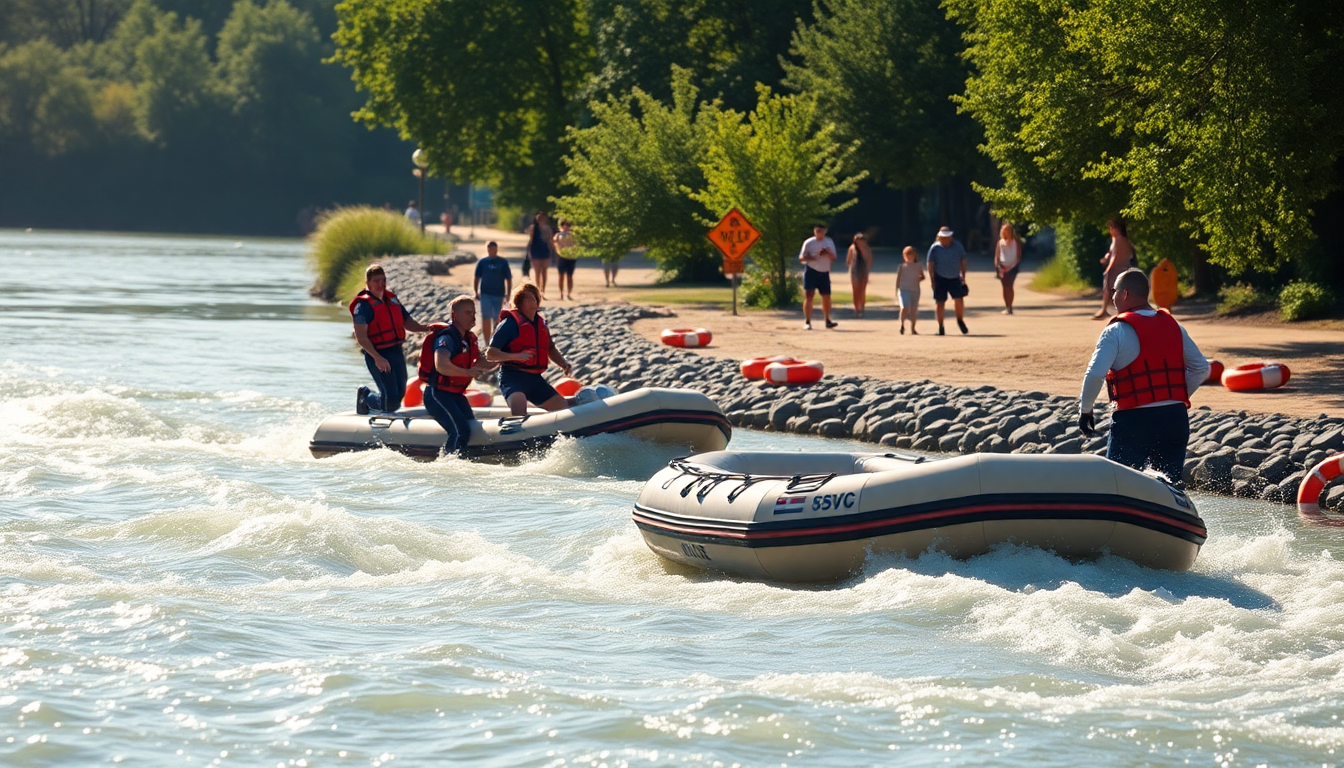Table of Contents
This summer, Calgary is bracing for an increase in water-related incidents, and local authorities are ramping up preparations to meet the expected demand on rescue services. Did you know that the Calgary Fire Department has reported a staggering 31 percent rise in rescue operations? That’s right—more people are finding themselves in precarious situations in local waters, which highlights just how crucial it is to prioritize water safety as the warm weather draws more residents to the rivers.
Current Trends in Water Rescues
Last year was particularly tragic, with four lives lost due to drowning incidents in Calgary. Since 2016, there have been 29 fatalities recorded in the city’s waters. Interestingly, July has consistently been the month with the highest number of rescues, averaging about 52 each summer month over the past few years. Carol Henke, a spokesperson for the Calgary Fire Department, points out that the Bow River, especially the stretch from the Shouldice boat ramp to Harvie Passage, sees the bulk of these rescues. Communities like Montgomery and Inglewood, which line the riverbanks, are especially vulnerable.
As temperatures climb, more residents are likely to take a dip. Community safety officer Alex Kwan notes that when the mercury hits between 28 to 30 degrees Celsius, many people—often without prior water experience—feel tempted to explore Calgary’s rivers. Unfortunately, this combination of inexperience and the lure of a sunny day can lead to dangerous situations. Are you prepared to enjoy the water safely?
Understanding the Risks: Statistics and Safety Measures
According to the Lifesaving Society of Canada’s National Drowning Report, around 450 individuals drown in the country each year, with men making up nearly 80 percent of those victims—drowning at a rate four times higher than women. Even more alarming is that over 80 percent of boating-related drownings involve victims who aren’t wearing a life jacket or personal flotation device (PFD). That’s a crucial takeaway: Canadian regulations require that every boat, including kayaks and canoes, must have a Canadian-approved life jacket for each person on board.
Wearing a life jacket isn’t just about following the law; it’s a critical safety measure that can help prevent shock and hypothermia, especially in waters colder than 21 degrees Celsius. And let’s not forget about alcohol—it plays a significant role in many water-related fatalities, contributing to nearly 30 percent of such deaths. A staggering 60 percent of boating accidents involve alcohol. Insp. Kurt Jacobs from the Calgary police traffic section emphasizes that alcohol impairs judgment, making it all the more important for anyone engaging in water activities to stay sober.
Best Practices for Water Safety This Summer
As summer kicks off and more Calgarians flock to the water, it’s essential to ensure that your watercraft is safe and suitable for urban wilderness settings. The fire department warns that some recreational flotation devices aren’t fit for river conditions and can easily puncture, leading to dangerous scenarios. Popular activities like stand-up paddleboarding also come with their own risks; for example, wearing ankle leashes can become a drowning hazard if someone gets pulled underwater and can’t release the strap.
This summer, Calgary’s fire and police departments, along with community safety officers, will be actively patrolling both the Bow and Elbow rivers. Their focus will be on safety education rather than strict enforcement, underscoring the importance of being proactive about water safety. With warm weather anticipated over the Canada Day weekend, officials are gearing up for a busy period. Are you ready to prioritize your safety while enjoying the water?


